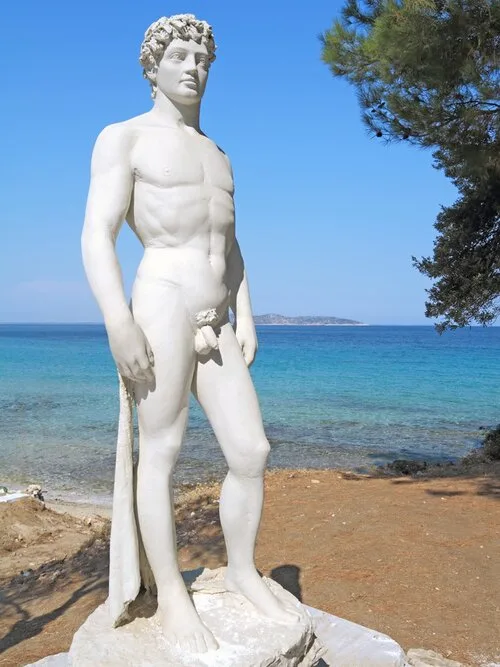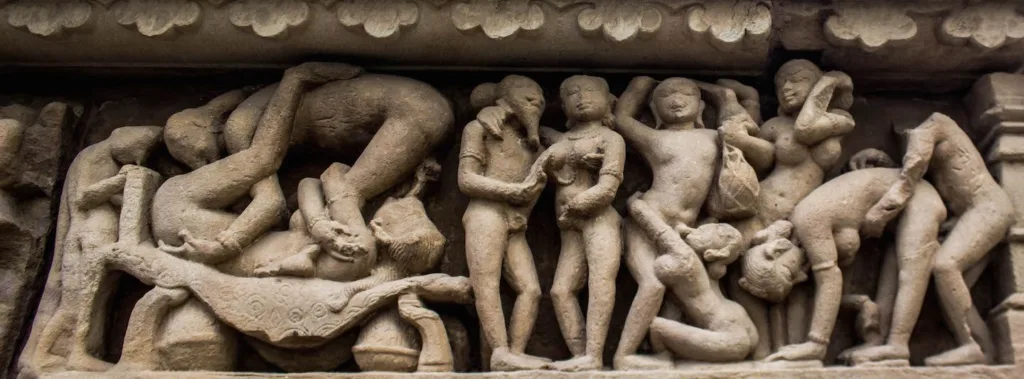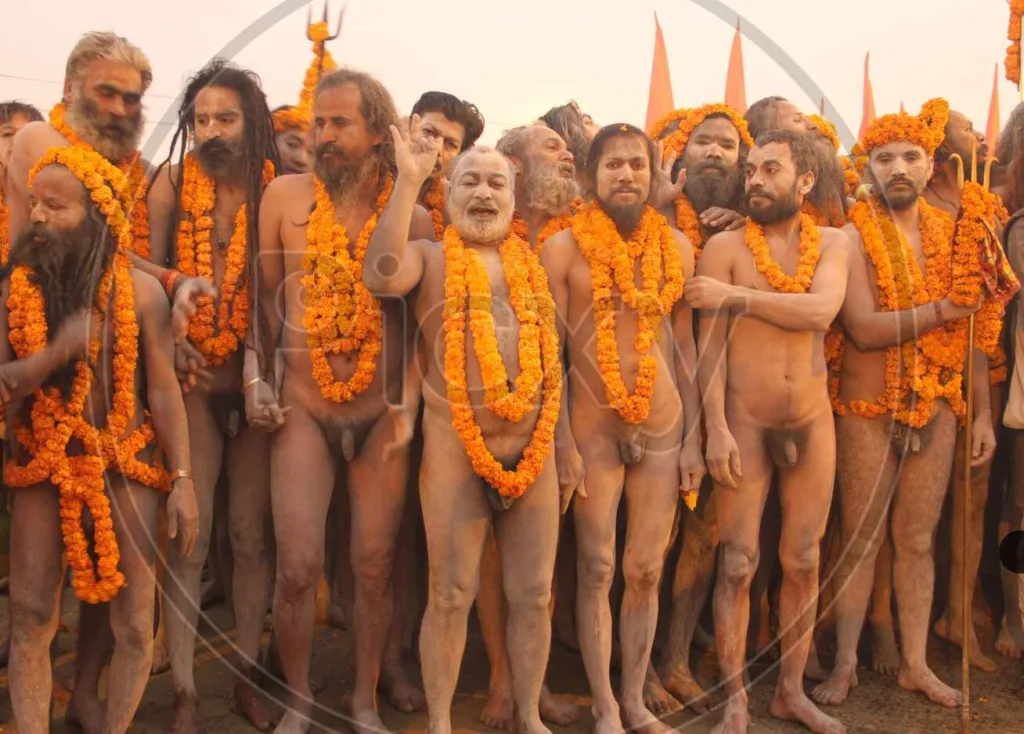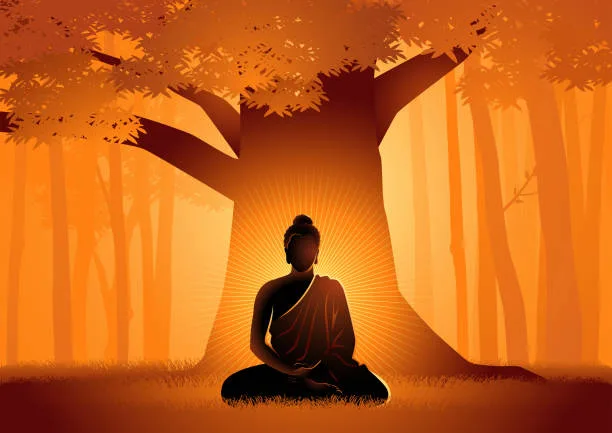When it comes to nudity, Greece and India represent two distinct universes. Nudity is casual and accepted in Greece, just like on a balmy summer day. In India, it is frequently viewed through a more critical lens, emphasizing tradition and moderation. Greece and India’s cultural tapestries are rich and varied, with strands of tradition, history, and centuries-old societal standards. At the crossroads of these vibrant civilizations are the opposing forces of everyday behaviors in Greek life and precise traditions in Indian culture.
While Greece is famed for its philosophical thoughts and democratic ideals, India’s cultural environment is characterized by complex rituals and spiritual beliefs. This article explores the historical, philosophical, and sociological influences that have produced these divergent cultural norms, providing insights into the intricacies of everyday life in Greece and India. So, why are there such glaring differences between these two cultures? Let’s peel back the layers.
The Greek Attitude: Nudity as Art and Nature
In ancient Greece, nudity celebrated the human form. Think about the grand statues of gods and athletes – they were often depicted without clothes, showcasing beauty and strength. This wasn’t just about being bare; it was about honor and aesthetics. Greeks viewed nudity as a natural part of life, whether in art, sports, or daily activities.
Although there are many different views, the majority of the people under question observe that nudity is a relative state; if I understand correctly, different cultures have historically had diverse perceptions of what constitutes nudity, and even then, there were distinct standards for what constituted “improper” or indecent nudity. And this is still true in some societies.

The Minoan Example
The Minoan civilization serves as an excellent illustration of this type. According to “Trey the Explainer on YouTube”, bare breasts were the norm for a woman in the ancient Minoan society and were not considered nudity, although exposed legs were.
Imagine walking through the streets of Athens during the Olympic games, where athletes would compete in the nude. It wasn’t shocking; it was simply part of the culture. This openness stems from a deep-rooted belief that the body is a work of art. In this light, nudity becomes an expression of freedom and confidence, blending seamlessly with nature.
I genuinely believe that at one point in Greek history, if a man’s glans were visible, he may also be deemed genuinely naked, or indecently exposed. However, in some social circumstances (such as sporting events), it was permissible to hide it with a string or loincloth. Even if he were completely nude, he wouldn’t be considered “naked.” Please take that with a grain of salt, though, as I am not a historian.
Indian Culture: Tradition and Modesty
On the flip side, India carries a different narrative. Here, the body is often wrapped in layers of meaning – literally and figuratively. Nudity can evoke feelings of discomfort, mainly due to cultural and religious beliefs. The Indian society emphasizes modesty; clothing often symbolizes respect and status.
Greece and India are like two vibrant tapestries, each crafted with colorful threads of history, tradition, and identity. As we take a closer look at these cultures, we’ll see how they reflect the heart and soul of their people. From ancient myths to festivals that light up streets, both cultures offer a fascinating glimpse into the human experience.
The historical background
Both Greece and India have histories that stretch back thousands of years. In Greece, the myths of gods and heroes like Zeus and Hercules are more than just stories; they’re the backbone of Greek identity. These tales have shaped art, literature, and philosophy. Think of them as the glue that holds together Greece’s rich cultural fabric.
As society evolves, so do cultural attitudes. In India, modern influences are increasingly seen in urban areas, where Western fashion is gaining acceptance. However, traditional values still hold significant sway. Many people navigate the balance between modernity and tradition, often choosing to blend styles rather than completely abandon modesty.
In Greece, the acceptance of nudity has transformed over time and is reflected in practices such as nude beaches and body positivity movements. The idea of nudity as natural is more prevalent, showcasing a freedom that many in India may still be hesitant to embrace.
In contrast, India’s cultural heritage is steeped in diverse traditions. The Vedas, ancient texts that outline rituals and philosophies, serve as a foundation for Indian thought. Indian culture is like a quilt, stitched together from various regions, languages, and practices, each patch telling a unique story of its own.
Historical Influences Shaping Perception
Greece’s historical context revolves around the glory of humanism. This philosophy places humans at the center, elevating the appreciation of the body. In contrast, Indian historical perspectives are often framed through spiritual and collective traditions which emphasize community values over individual expression.
In ancient Indian culture, nudity was not regarded with the same level of taboo as it is in modern times. Historical texts, art, and religious practices reveal a more nuanced and symbolic understanding of the human body. For instance, early Indian sculptures and temple carvings often depicted gods, goddesses, and even human figures with minimal or no clothing, emphasizing spiritual purity, fertility, and the divine nature of the body rather than viewing it through a lens of shame or impropriety.

Nudity was also an integral part of ascetic traditions, such as those followed by certain Jain monks, where it symbolized renunciation and detachment from the material world. This acceptance of nudity, however, was not for the sake of sensuality but was deeply rooted in spiritual and philosophical beliefs that viewed the body as a vessel for the soul. Over time, with the influence of external cultures, colonialism, and changing social norms, the perception of nudity in India shifted, becoming more associated with modesty and morality, leading to the stricter taboos seen in contemporary society.
However, Greek culture, particularly in ancient times, celebrated the human body. Statues of athletes and gods displayed nudity as a form of art and beauty. This reflects a different set of values where the human form was seen as an expression of strength and divinity. For India, however, tradition often takes the front seat, prioritizing modesty as a sign of respect and dignity.
The backdrop of colonial influence in India also plays a role. It introduced Western values amid existing traditions, creating a complex view of nudity that often opposes the local narratives. So, while the Greeks embraced nudity as a statement of beauty, the Indian response was often a cautious embrace of tradition.
Modern Perspectives: A Shifting Landscape
Today, both Greek and Indian societies are undergoing significant cultural transformations, particularly in their attitudes toward nudity, identity, and freedom. While these cultures have historically approached nudity in vastly different ways, modernity is bringing about a convergence of ideas, driven by globalization, technology, and changing social values. The evolution in both Greece and India reflects a broader global trend where traditional norms are being questioned, and new paradigms are emerging.
In Greece, the historical embrace of nudity, rooted in the ideals of physical beauty, athleticism, and divine representation, continues to influence contemporary society. The ancient Greeks celebrated the human body through art, athletics, and religious symbolism, viewing nudity as an expression of human excellence and a reflection of divine favor. This legacy is still evident today in the way Greeks approach art and public spaces. Nudity in art remains a norm, and public statues and sculptures often depict the human form in a natural, unembellished state.
However, the context in which nudity is accepted has evolved. Modern Greek society, like much of the world, has adopted contemporary clothing as the standard in daily life, and public nudity is largely confined to specific contexts, such as beaches or certain artistic and cultural events. Despite these shifts, the Greek celebration of freedom, particularly in the expression of the human body, remains strong. However, this freedom is now balanced with more diverse values that reflect the complexities of modern life.
As Greek society has modernized, the approach to nudity has diversified. There is a growing recognition of individual rights and the need for respect for different perspectives. This has led to more nuanced conversations about body image, gender, and sexuality. In the past, nudity in Greece was often tied to ideals of masculinity and athleticism, but today, there is a broader appreciation of the diversity of human bodies and experiences.
From the lens of Feminist movements and LGBTQ+ activism
Feminist movements and LGBTQ+ activism have played significant roles in challenging traditional norms and expanding the discourse around nudity and freedom. For instance, public debates around issues such as topless sunbathing or nudity in art exhibitions often reflect a tension between preserving cultural heritage and adapting to contemporary values. These conversations are part of a broader societal shift towards greater inclusivity and respect for individual autonomy, while still maintaining a connection to the historical roots that have long defined Greek identity.
In contrast, India’s relationship with nudity has always been more complex, deeply intertwined with religious, spiritual, and social norms. Historically, nudity in India was not seen through a purely sensual or immoral lens but was often associated with asceticism, spirituality, and artistic expression. Ancient Indian art and temple architecture frequently depicted deities, celestial beings, and even human figures in various states of undress, symbolizing purity, fertility, and divine energy.

Ascetic traditions, such as those practiced by Jain monks, embraced nudity as a symbol of renunciation and liberation from worldly attachments. However, over centuries, particularly under the influence of Islamic rule and later British colonialism, societal attitudes towards nudity became more conservative, and modesty became a key marker of respectability, especially for women.
In modern India, the conversation around nudity is undergoing a significant transformation, driven by younger generations who are increasingly challenging traditional norms and embracing new forms of expression. Social media has become a powerful platform for these discussions, providing a space where issues related to body image, modesty, and identity can be openly debated. On platforms like Instagram, Twitter, and Facebook, young Indians are redefining beauty standards, often pushing back against the conservative values that have long dominated the discourse around the human body.
Campaigns promoting body positivity, gender equality, and sexual freedom have gained traction, sparking both support and backlash. These movements are part of a broader global trend, but they take on unique significance in the Indian context, where questions of tradition, modernity, and cultural identity are often deeply contested.
Urban Liberal Attitude in India
One of the most striking aspects of this cultural evolution in India is the way it highlights the tension between tradition and modernity. For many, particularly in urban areas, embracing more liberal attitudes towards nudity and body image is seen as a way of asserting individual freedom and autonomy. This is especially true for women, who have historically borne the brunt of societal expectations around modesty and virtue.
By challenging these norms, they are not only reclaiming their bodies but also redefining what it means to be a modern Indian woman. At the same time, there is a strong counter-movement that views these changes as a threat to traditional values and social cohesion. Debates around issues such as the right to wear revealing clothing, the depiction of nudity in art and media, or even the acceptance of different sexual orientations often reveal deep divisions within Indian society.
This cultural shift in India is not occurring in isolation. It is part of a broader global conversation about identity, freedom, and the role of tradition in a rapidly changing world. The influence of Western ideals, amplified by globalization and the internet, is undeniable. However, the way these ideals are interpreted and adapted within the Indian context is uniquely shaped by the country’s diverse cultural and religious heritage. For instance, while Western feminist movements have inspired many Indian women to challenge patriarchal norms, the conversation around nudity in India often incorporates elements of spirituality and respect for the sacred, reflecting the country’s deep-rooted spiritual traditions.
It is also important to recognize that these cultural conversations are not limited to urban, educated elites. They are gradually permeating different strata of Indian society, albeit in varying degrees and forms. In rural areas, where traditional values often hold more sway, the conversation around nudity and body image may manifest differently, focusing more on issues of dignity, respect, and community honor. However, even in these contexts, the influence of modern media and the internet is undeniable, leading to a gradual, if sometimes contentious, shift in attitudes.
Nudity-A Paradigm Shift
As Greece and India continue to navigate these cultural evolutions, it is fascinating to observe how both societies are redefining their relationships with nudity and the human body. In Greece, the celebration of the human form remains a cultural cornerstone, but it is increasingly tempered by a recognition of diverse identities and perspectives. In India, the conversation is more complex, reflecting the country’s unique blend of tradition and modernity. As younger generations push the boundaries of what is considered acceptable, they are not only challenging societal norms but also reshaping the very fabric of Indian identity.

These cultural conversations are not just about nudity; they are about broader issues of freedom, identity, and the role of tradition in contemporary society. In both Greece and India, the way these debates unfold will likely have lasting impacts on how these cultures understand themselves and their place in the world. As the world becomes more interconnected, the exchange of ideas between cultures will continue to shape these conversations, leading to new and unexpected outcomes. Whether through art, social media, or public discourse, the evolving attitudes toward nudity in Greece and India offer a glimpse into the larger processes of cultural change that are redefining societies around the globe.
Conclusion: The Path Ahead
The contrast between Greek and Indian attitudes towards nudity is profound. While nudity is widely accepted and celebrated in Greece, India’s meticulous view reflects a deeper respect for tradition and societal norms. Both cultures offer rich narratives that shape their respective approaches to nudity, highlighting the importance of context in understanding human behavior.
As the world grows smaller and cultures intermingle, the dialogue around nudity will continue to evolve. Understanding these differences helps us appreciate the variety of human experiences, reminding us that perspectives on the body are as diverse as the cultures that shape them.
Disclaimer: The author’s views are his or her own. The facts and opinions in the article have been taken from various articles and commentaries available in the online media and Eastside Writers does not take any responsibility or obligation for them.
Note: Contact our Writers at www.eastsidewriters.com for writing Blogs/Articles on any niche. We have experts in various domains from Technology to Finance and from Spirituality to Lifestyle and Entertainment.






